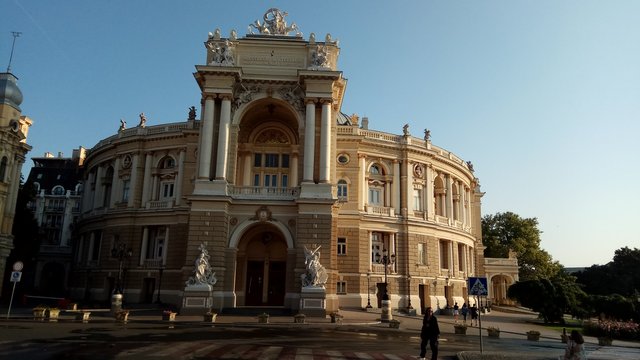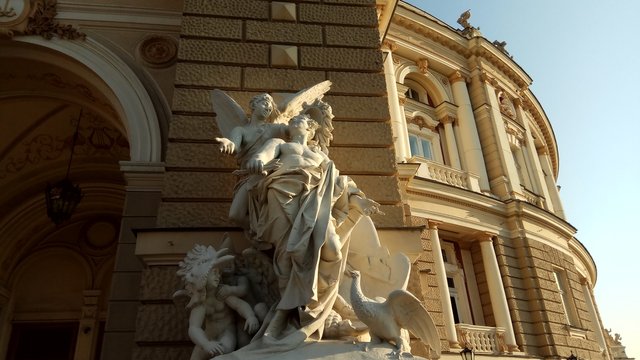

The Odessa Opera House is a real business card of the modern Pearl by the Sea. This theater is proud of its long and difficult life. In addition, all the great artists, singers and creative people performed on the stage of the Odessa Opera House. Nowadays, various events of a global scale are held here. I will conduct a short excursion into the past of the Odessa Opera House.
The birth of the majestic Odessa National Academic Opera and Ballet Theater
In 1804 Odessa was awarded the right to build and open the Opera House. By the way, it was the third city with an opera house in the entire Russian Empire. Architect Thomas de Thomon got down to business. His project turned out to be grandiose. On February 10, 1810, the grand opening of the Opera House in Odessa took place.
The old building did not last long. It was constantly rebuilt and completed. Ultimately, at night, from January 1 to January 2, 1973, the Opera House burned to the ground. The reason was the gas wick, with which the clock was illuminated.
Everyone understood perfectly well that Odessa needed the Opera House, which was considered the main attraction of the city. Ferdinand Fellner and Hermann Helmer were commissioned to design the new building. They coped with their task pretty quickly. Already in 1882 the project was ready. 5 years later, on October 1, 1987, the grand opening of the Opera House took place.
The architecture of the buildings is unique. The opera house was built in the style of the Viennese Baroque. The lower part of the building is decorated with some Tuscan columns in loggias. The upper part feels lighter and more airy. Here we see arched loggias, columns and pilasters of the Ionic order. Yes, it belongs to one of the three architectural orders of Ancient Greece. The unique portico and domed roof add special charm.
A few words for the sculptural group

The building is decorated with a sculpture of Melpomene. She is considered the patroness of all art. Muse is seated on a chariot. It is harnessed by 4 panthers. They were captivated by the muse of the tragedy. A little lower, on the left side, we see the sculpture of Orpheus. He plays the famous cithara. The centaur listens to magic music. On the right side you can see the Terpsichore sculpture. The muse of the dance is spinning in the same dance with a young girl.
At the bottom, we see two sculptural groups. They represent comedy and tragedy. On the right side, we can contemplate an episode of the comedy "Birds" by Aristophanes. On the left side, a performance of Euripides' "Hippolytus" is played out in front of the audience.
The overall picture is complemented by a gorgeous fountain located on the side of the sea. It emphasizes the grandeur and special beauty of the theater itself.
This is just a small sketch. The history, everyday life and theatrical life of the Opera House deserve to be written about them whole novels, composed myths and glorified in the great musical creations of the world. I will continue to tell my readers for the Opera House. Including those people who wrote their names in the history of Odessa and the World!
Congratulations @jurgan! You received the biggest smile and some love from TravelFeed! Keep up the amazing blog. 😍 Your post was also chosen as top pick of the day and is now featured on the TravelFeed.io front page.
Thanks for using TravelFeed!
@for91days (TravelFeed team)
PS: TravelFeed is in social media to reach more people, follow us on Facebook, Instagram, and Twitter.
Downvoting a post can decrease pending rewards and make it less visible. Common reasons:
Submit